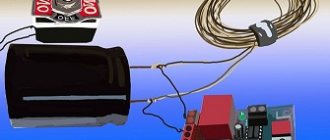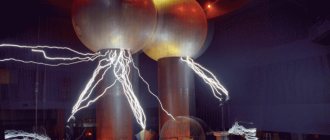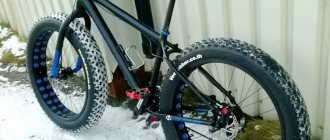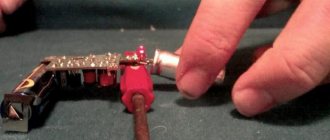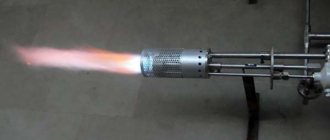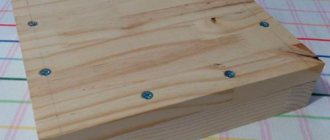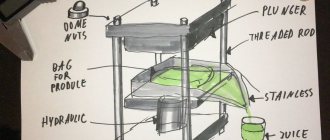DIY mini tractor - review of diagrams, drawings and projects of homemade tractors (105 photos)
In the modern world, many people have country houses where a lot of manual labor is used. In order to make their life easier, many people decide to buy a mini-tractor. However, such a purchase can hit your budget hard.
In order to avoid this, many decide to make homemade mini-tractors. This will help to significantly reduce labor costs for working in the garden and save money.
Advantages and disadvantages
What are the pros and cons of such a product? Firstly, you can operate a mini-tractor even in very limited space - it will fit perfectly into a small garage in the backyard. However, despite the fact that the size of a homemade tractor is relatively small, this will not in any way affect the functionality and volume of work performed.
In addition, it will help cope with plowing heavy rocky soil, since in this case digging with a shovel will give almost no results.
In addition, you can independently make your own unique drawing of a tractor that will meet all your needs.
You can also modify the designs to help reduce the weight and stress on the ground being plowed. This will greatly increase the productivity of the process.
Possible problems
On the one hand, you can do everything completely for yourself, but, on the other hand, if it breaks down, you cannot simply take it to the service center and give it to a specialist. You'll have to fix everything yourself.
Problems may also arise if you need to replace a part - there may simply not be spare parts. In addition, such a vehicle will not be able to be driven freely without registration.
Manufacturing instructions
How to make a mini-tractor with your own hands? First, start planning. You should have drawings of the product, all parts and assemblies on hand.
Basics: power plant, transmission unit for synchronizing the operation of the engine and wheels, frame as a base for the entire structure, driver's seat.
The missing parts can be found in car repair shops or a broken car can be disassembled into parts.
Frame
The frame is the basic part of the structure to which everything else is attached. However, making it is not that difficult. Weld it from a channel or I-beam. In order to increase the mobility of your mini-tractor, you can make a frame from two and fasten them on the sides with hinges. This will increase the mobility of your vehicle, and it will be easier for you to take turns.
Engine
Start preparing the engine. Make sure it is powerful enough to perform all the required functions. But be careful not to overdo it, otherwise you may damage the structure.
You can make your own mini-tractor with a walk-behind tractor engine. In general, making a tractor based on it is especially convenient, because it already has almost everything - it only needs to be slightly modified.
Model 4x4
A DIY 4x4 mini tractor will be very convenient due to its versatility. It can be used for a wide variety of needs. This is a standard option that will suit everyone. In addition, this will be an ideal option for those who want to make a tractor with all-wheel drive.
Gearbox and transmission
In order to customize the operation of your tractor, you can use a gearbox from old Soviet machines. For example, GAZ-53. Also get a clutch system from them. To make the rear axle, take a ready-made assembly from a passenger car.
Steering
Use a steering wheel with hydraulic cylinders - this will greatly facilitate the process of driving a mini-tractor and increase your productivity. Unfortunately, you won’t be able to make a hydraulic booster yourself at home. Therefore, it is better to use one ready from the car.
The seat can be made from any suitable item.
The wheels must be made at least 26 inches in diameter - they are ideal for a tractor on which you plan to transport heavy loads.
If you plan on serious agricultural work, then you should give preference to wheels with a diameter of at least 48 inches. If you take a smaller size, the device can easily be damaged, unable to withstand such intense load.
Thus, now you know how to make a mini-tractor with your own hands at home.
Photo of a mini tractor with your own hands
Case and glass
Solar panels for home have an aluminum body. This metal does not corrode and has sufficient strength and is light in weight. A normal body must be assembled from a profile containing at least two stiffeners. In addition, the glass must be inserted into a special groove, and not fixed on top. All these are signs of normal quality.
There should be no glare on the body
When choosing a solar battery, pay attention to glass. In normal batteries it is not smooth, but textured. It is rough to the touch; if you rub it with your nails, you can hear a rustling sound. In addition, it must have a high-quality coating that minimizes glare. This means that nothing should be reflected in it. If reflections of surrounding objects are visible at any angle, it is better to find another panel.
Making it yourself: the simplest models of electric cultivator
Any owner of a garden plot knows how tedious and painstaking the work associated with cultivating various crops can be.
Moreover, such work is most often carried out by elderly people, for whom it is not so easy to cope with the loads associated with cultivating the soil before planting and during the cultivation of garden plants.
To simplify this difficult process, there is an electric cultivator, which you can easily make with your own hands at home. Below are the simplest models of such structures.
Cultivator: concept, scope of application
An electric cultivator is a device equipped with an electric drive and designed for cultivating land. Thus, it can be a full-fledged analogue of manual labor and will cope perfectly with the task of loosening the soil, applying fertilizers, creating beds and weeding them. In simple words, an electric cultivator is a mechanized chopper.
Attention! The device in question is not at all intended for cultivating large agricultural areas. But it is perfect for caring for a small flower garden, vegetable plot, etc.
The main task of the cultivator is to give the soil the necessary structure (it removes a layer of earth no more than 30 cm deep), thus preparing it for fertilizing, watering and other manipulations with the area planted with crops.
Among the main advantages of an electric cultivator are the following:
- Ecological cleanliness. Since the cultivator runs on electricity, it is completely safe for the environment and humans. That is why it can be safely used even in closed areas (in greenhouses, for example).
- Light weight of the device. Thanks to its lightness, even people who do not have significant physical abilities (for example, old people) can handle the device.
- Compactness. The cultivator can be easily moved around the site and, if necessary, can be easily transported by car.
- Easy to operate and maintain. To work with a cultivator and maintain its working condition, it is not necessary to have special skills.
- Low manufacturing costs. It is quite possible to make a cultivator from parts that everyone has on hand, so it is accessible to a wide range of gardeners and gardeners.
Making an electric cultivator with your own hands
With the help of simple devices, which can be found in almost every home where a man lives, you can make a simple, easy-to-use and, most importantly, practical cultivator that runs on electricity. Below we present to your attention the simplest models of such products.
Starter design
A cultivator from a starter can be made if you have a starter from a car in your home garage. In our case, we will talk about a starter from Gaz-51. In order for the part to perform its functions effectively and over a long period of time, you will need to perform some manipulations with the starter to improve it.
It is necessary to shorten the starter shaft slightly, after which it will be necessary to replace its front cover and make many holes with a diameter of about 5 mm in both the front and rear covers.
Through these holes the air will be blown efficiently by a fan, which can perform this function using the shaft of an electric motor, for example, from some old truck.
Cultivating cutters should be installed at the ends of the working shaft.
Engine
The semi-finished unit is mounted on a pre-prepared power platform made of sheet steel.
Advice. Since the design will be quite bulky, care should be taken to strengthen the base for the cultivator. For this purpose, longitudinal stiffeners are used, which are welded to the load platform.
Construction from an angle grinder
From a grinder you can make a compact cultivator of low power. It is quite enough for weeding rows in the garden or on a vegetable plot. The grinder in this design acts as an electric drive.
All other components for creating a cultivator can be taken from an old motor cultivator. The average power of an angle grinder is 600 rpm. Therefore, a cutting wheel will not work for it. The best option is to use a pulley with a groove for the V-belt.
The angle grinder suspension unit is welded to the frame of the old cultivator. To connect the finished product to the mains, you can use an extension cord on a reel.
The finished product will be quite light, compact, and highly productive (the cutters of the device will produce about 300 rpm).
Advice. To make it more convenient to work with an electric cultivator and to prevent your hands from feeling overexertion, you can put small pieces of rubber hoses on the handles of the product that match the diameter of the cultivator pipes.
Washing machine design
If you have an old, completely useless (but still working) washing machine lying around your house, don’t rush to throw it away: try making a wonderful small electric cultivator using its motor.
To create it you will need a simple set of parts:
- An ordinary wheel with a diameter of about 1.5 m, which will perform the simplest function - propulsion.
- An electric motor from an old washing machine (even a Soviet version will do).
- Metal corner about 3 m long.
- Twin wire.
- A drum and a piece of tin to create a protective casing.
- Springs from a car (they will make excellent knives).
- Gearbox, toggle switch and start button.
Now you can proceed directly to assembling the structural parts. The first step is to complete all welding work. Then comes the preparation of knives for the cultivator. For them to really work, you need to follow a simple rule: each of the knives must have its own trajectory of movement, and it should not intersect with all the others.
The motor will need two windings: working and starting. The first will be connected to the network in a permanent mode, while the second is necessary exclusively for launching a ready-made garden power tool.
These are all the subtleties that you should know to create a simple cultivator design that works effectively on the site. Good luck!
How to make an electric cultivator with your own hands: video
Thermal generator design
As already mentioned, the thermogenerator was intended for use in rural areas, where lightning kerosene lamps were used for lighting. Such a lamp, equipped with a thermogenerator, became not only a source of light, but also electricity. At the same time, no additional fuel consumption was required, because exactly that part of the kerosene that simply flew into the chimney was converted into electricity. In addition, such a generator was always ready for work; its design was such that there was simply nothing to break in it. The generator could simply lie idle, work without load, and was not afraid of short circuits. The service life of the generator, compared to galvanic batteries, seemed simply eternal.
The role of the exhaust pipe of a lightning kerosene lamp is played by an elongated cylindrical part of the glass. When using a lamp together with a thermal generator, the glass was made shortened, and a metal heat transferr 1 was inserted into it, as shown in Fig. 4.
Rice. 4. Kerosene lamp with thermoelectric generator
The outer part of the heat transferr has the shape of a multifaceted prism on which thermopiles are installed. To increase the efficiency of heat transfer, the heat transferr inside had several longitudinal channels. Passing through these channels, hot gases went into exhaust pipe 3, simultaneously heating the thermopile, or rather, its hot junctions. An air-cooled radiator was used to cool the cold junctions. It consists of metal fins attached to the outer surfaces of thermopile blocks.
The thermogenerator – TGK3 consisted of two independent sections. One of them produced a voltage of 2V at a load current of up to 2A. This section was used to obtain the anode voltage of the lamps using a vibration transducer. Another section with a voltage of 1.2V and a load current of 0.5A was used to power the filaments of the lamps.
It is easy to calculate that the thermal generator had a power not exceeding 5 Watts, but it was quite enough for the receiver, which made it possible to brighten up long winter evenings. Now, of course, this seems simply ridiculous, but in those distant times such a device was undoubtedly a miracle of technology.
Do-it-yourself homemade electric tractor - Metalworker's Guide
Local power grids are not always able to fully provide electricity to homes, especially when it comes to country houses and mansions. Interruptions in the constant power supply or its complete absence forces us to look for alternative ways to obtain electricity.
One of these is the use of an electric generator - a device capable of converting and storing electricity , using the most unusual resources (energy from the sun, wind, tides).
Its operating principle is quite simple, which makes it possible to make an electric generator with your own hands. A homemade model may not be able to compete with a factory-assembled analogue, but this is a great way to save more than 10,000 rubles.
If we consider a homemade electric generator as a temporary alternative source of power supply, then it is quite possible to get by with a homemade one.
How to make an electric generator, what is required for this, as well as what nuances will have to be taken into account, we will find out further.
The desire to have an electric generator in your use is overshadowed by one nuisance - the high cost of the unit .
Whatever one may say, the lowest-power models have a fairly exorbitant cost - from 15,000 rubles and above. It is this fact that suggests the idea of creating a generator with your own hands.
However, the process itself can be difficult if:
- no skill in working with tools and diagrams;
- there is no experience in creating such devices;
- the necessary parts and spare parts are not available.
If all this and a great desire are present, then you can try to assemble a generator , guided by the assembly instructions and the attached diagram.
It is no secret that a purchased electric generator will have a more expanded list of capabilities and functions, while a homemade one can fail and fail at the most inopportune moments. Therefore, whether to buy or do it yourself is a purely individual question that requires a responsible approach.
How does an electric generator work?
The operating principle of an electric generator is based on the physical phenomenon of electromagnetic induction. A conductor passing through an artificially created electromagnetic field creates a pulse, which is converted into direct current.
The generator has an engine that is capable of generating electricity by burning a certain type of fuel in its compartments: gasoline, gas or diesel fuel.
In turn, the fuel, entering the combustion chamber, produces gas during the combustion process, which rotates the crankshaft.
The latter transmits an impulse to the driven shaft, which is already capable of providing a certain amount of output energy.
Technical specifications: what to look for
Certified solar panels always indicate operating current and voltage, as well as open-circuit voltage and short-circuit current. It is worth considering that all parameters are usually indicated for a temperature of +25°C. On a sunny day on the roof, the battery heats up to temperatures significantly higher than this figure. This explains the presence of higher operating voltage.
Example of technical characteristics of solar panels for a home
Also pay attention to the open circuit voltage. In normal batteries it is about 22 V. And everything would be fine, but if you carry out work on the equipment without disconnecting the solar panels, the no-load voltage will damage the inverter or other connected equipment that is not designed for such a voltage. Therefore, during any work - switching wires, connecting/disconnecting batteries, etc. etc. - the first thing you should do is disconnect the solar panels (remove the terminals). Having gone through the diagram, you connect them last. This procedure will save you a lot of nerves (and money).
Homemade mini tractors with your own hands - homemade options
A mini tractor and a motor tractor are agricultural equipment that helps in the process of cultivating land, planting and harvesting crops, and caring for a personal plot.
Thanks to a wide selection of attachments, you no longer have to do everything yourself, thereby ruining your health.
In addition, you will have much more free time, and the quality of plant care will be much higher.
Mini tractors and motor tractors are quite expensive today. Not everyone can afford even Chinese models.
However, there is a way out - you can assemble a homemade mini tractor from scrap materials. It is important to have the necessary set of tools, as well as the time and desire to craft.
Diagrams and drawings, as well as a step-by-step description of the entire process, will help you make homemade products at home.
Where to start making homemade stuff?
To make any homemade product, you must first study the operating principle of a mini tractor, its types, features, applications, and capabilities. This is necessary so that you can decide for what purpose you need this equipment.
A mini tractor is a fairly powerful piece of equipment that performs any task of cultivating any type of land, as well as caring for crops, killing weeds, fertilizing, harvesting, transporting goods, and much more. A homemade minitractor, in its essence, will not differ in any way in its technical features from a full-fledged unit from well-known manufacturers.
To build a homemade mini tractor with your own hands, you first need to create a detailed diagram of the future unit. It is by this that you will be guided in calculating dimensions and the location of working units.
You can make a homemade mini tractor yourself, using the following cars as a basis:
- DIY mini tractor assembly from UAZ. The components of a UAZ car are very cheap, so you won’t need to spend a lot of money. However, the technical characteristics of the machine are perfect for upgrading it into a mini tractor. All-wheel drive makes the car more convenient and functional;
- Homemade from LUAZ. A mini tractor from LUAZ can be made all-wheel drive with switchable rear wheel drive. You can take the entire chassis and gearbox from the car;
- Homemade from Zhiguli. A homemade Zhiguli is the best option, since this car, which has already outlived its usefulness, will always be found, as well as its components. The only drawback is that it runs on gasoline, which is quite expensive today, while modern models of mini tractors run on diesel;
- Homemade from Oka. This car will have an excellent engine that will allow the future mini tractor to fully cope with its tasks;
- From a walk-behind tractor engine. The most common and simplest homemade option. In fact, you will only need to upgrade the walk-behind tractor by adding a frame and a cabin.
In addition to converting from different cars, you can make individual elements for your homemade mini tractor, such as:
- hydraulics. A mini tractor with this device has many advantages. Such equipment will be much more convenient to operate, you will be able to install hydraulically driven attachments, and significantly improve the braking system. In general, your tractor will be more durable, and its capabilities will increase significantly;
- beam/bridge You can make your own front beam for a mini tractor. Often, factory models have a weak device that often cannot withstand the load. This can be corrected by improving the part with your own hands;
- cabin. A mini tractor may not have a cabin. However, working for long periods of time under the scorching sun can have a negative impact on your health. You can make a cabin that will protect you from direct sunlight, as well as from rain and wind;
- PTO (power take-off shaft). Necessary for transmitting rotation from the drive to attachments. There are three types - dependent, independent, synchronous;
- the frame is easily made from metal pipes with a diameter of 4 centimeters. To make the structure more durable, special corners are welded into the side parts;
- The gearbox will fit from a Skoda car. Other similar options will work, but keep in mind that you must have several forward speeds and at least one reverse speed;
- traction can be made from a motorized stroller;
- The steering column can also be taken from a car of a domestic manufacturer.
Among other things, you can make a mini tractor with your own hands with different types of engines, such as ZID or UD 25. The first is a four-stroke single-cylinder air-cooled gasoline engine, the second is a four-stroke carburetor gasoline engine. Both are great for making your own agricultural machinery, in particular a mini tractor.
Homemade mini tractor and everything for it - the advantages and disadvantages of a prefabricated structure
Homemade mini tractors have a lot of advantages. As mentioned above, the main one is low cost. All components can be taken from old cars, and some can be made from scratch from scrap materials. There are other advantages of this design:
- In terms of their functionality, homemade products are no different from factory models. They have the same power, the same abilities;
- Large agricultural machinery is designed for large areas, and small walk-behind tractors are designed for small areas. A homemade mini tractor is an excellent option for medium-sized fields where the use of other equipment would be impractical;
- While creating a homemade mini tractor, you will study your technique inside and out. So in the future, when you might need another upgrade, you can easily handle this task. If a breakdown suddenly occurs, you can quickly find its cause and fix the problem.
Of course, there are also disadvantages. You will have to look for all the constituent elements yourself. You should not use rare parts, because in the future it will be very difficult to find a replacement for it. Also, you should not use homemade equipment to travel on the roads, so as not to receive a fine for modifying the car.
Determining the size and number of photocells
Good 12-volt solar panels should have 36 cells, and 24-volt solar panels should have 72 solar cells. This amount is optimal. With fewer photocells you will never get the stated current. And this is the best option.
You should not buy dual solar panels - 72 and 144 elements, respectively. Firstly, they are very large, which is inconvenient for transportation. Secondly, at abnormally low temperatures, which we periodically experience, they are the first to fail. The fact is that the laminating film greatly decreases in size in cold weather. On large panels, due to high tension, it peels off or even breaks. Transparency is lost and productivity drops catastrophically. The panel is being repaired.
4V solar panel has 7 cells
Second factor. On larger panels the thickness of the body and glass should be greater. After all, windage and snow loads increase. But this is not always done, as the price increases significantly. If you see a double panel, and the price for it is lower than for two “regular” ones, it’s better to look for something else.
Once again, the best choice is a 12-volt home solar panel consisting of 36 solar cells. This is the best option, proven by practice.
Layout
The relative arrangement of the units of any tractor has developed historically. The classic layout of a self-propelled vehicle is as follows: the engine is located in front, longitudinally, above the front axle. A gearbox is connected to it through the clutch, followed by a transfer case and followed by a drive axle. The shafts of the units are connected to each other using cardans and (or) couplings.
Compliance with this scheme will be the best option when creating a mini-tractor, since it will allow you to use existing units without changing them. According to the experience of many creators of homemade tractors, it is better to assemble the units “in place”, without doing unnecessary drawings and calculations. The best option is to place all the main components and homemade mechanisms on the finished frame, installing them on temporary supports (conveniently, on wooden blocks) and finding the best relative position. After this, you can begin to manufacture brackets and fastenings for tractor components. But we must not forget that all components on self-assembled tractors must be mounted through supports that dampen vibrations (rubber cushions). It is best to borrow them from the same equipment from which the unit was taken. Another important factor that needs to be taken into account is weight distribution, i.e. distribution of the total weight of the mini-tractor along the front and rear axles. The most acceptable option is that 60% of the weight falls on the drive wheels, 40% on the steering wheels.
Driving on the roads
Not all home-made mini-equipment of designers goes on public roads. And this is correct, because our country lists a number of strict requirements that vehicles moving along them must meet. Even if everything turned out well and the product meets all the requirements, certification will be required to confirm this, which is very expensive.
Therefore, it is prohibited to drive on the roads on a homemade tractor. If it needs to be delivered to the work site, it is better to do this on a trailer. This, by the way, is one of the reasons why they are trying to make homemade work easier.
Source
Operating principle of the electric motor
Practical manufacturing requires theoretical knowledge.
The laws of physics say that if a conductor with an electric current in the form of a frame is placed in a magnetic field, then a force will act on it causing the frame to rotate.
If you add another frame at an angle or change the direction of the current, the rotation will be continuous. In an electric motor, the function of creating a magnetic field is performed by the stator, and the rotating frame is replaced by a rotor or armature.
Device
How does an electric car engine work? When describing the operating principle of an electric motor, it was already mentioned that the main components of an electric vehicle engine are the rotor and stator.
- The rotor is the rotating component of the engine.
- The stator is stationary. It is responsible for creating a stationary magnetic field.
Rotor
A classic car rotor consists of a core, a winding and a shaft. Some electric motors also have a commutator included in the rotor.
- The core is a metal rod on the periphery of which the winding is located. The magnetic circuit of the electric motor is closed directly through the core. The core is made of round steel plates. The structure is similar to a layer cake. In the production of cores, insulated sheets of steel with silicon additives are used. In this case, an increase in the efficiency of the electric motor, the lowest specific losses in the metal per unit mass, and a decrease in the magnitude of demagnetizing Foucault eddy currents that arise due to magnetization reversal of the core are ensured. There are longitudinal grooves on the surface of the core. The winding is laid through them.
- Shaft is a metal rod that directly transmits torque. Also made of electrical steel. Serves as a basis for inserting the core. At the ends of the shaft there are threads, recesses for gears, rolling bearings, and pulleys.
- The collector is a block mounted on a shaft. It is a system of copper plates. Isolated from the shaft. Serves as an alternating current rectifier, automatic current direction switch (depending on the type of electric motor).
Stator (inductor)
The stator consists of a frame, a core and a winding:
- Stator frame – stator housing. As a rule, the body is aluminum or cast iron. Aluminum frames are popular for electric motors in passenger cars, while cast iron frames are popular for special equipment that is forced to work in conditions of high vibration. The frame serves as a mounting base for the main and additional poles.
- The stator core is a cylinder made of profiled steel sheets. Fixed with screws inside the frame. Equipped with slots for winding.
- Winding. Creates a magnetic flux. When the rotor conductors intersect, it induces an electromotive force into them.
Why are people trying to make an electric car themselves?
The question of why someone decided to make an electric car with their own hands has many answers. After all, everyone can have their own motives. Some people are simply interested in doing something on their own, others are trying to save money, others do not trust manufacturers, and so on. Therefore, the issue of making an electric car yourself is purely personal.
That being said, it's important to note one rather important factor: modern electric vehicles typically cost about 30% more than an internal combustion engine alternative.
The inflated cost is explained by the fact that electric cars are equipped with expensive batteries, as well as expensive electrical equipment (power plant with controllers). Therefore, when there is a rather old car in the garage, which, in principle, is no longer a pity, many decide to make a cheap electric car out of it, saving a significant amount on the body and most body parts, as well as on the chassis.
Is it worth making an electric car yourself?
The answer to the question of whether it’s worth creating a homemade electric car depends on whether you have free time, free finances, and sufficient motivation.
No matter how hard you try to save money, even if you have a car suitable for conversion, you will need to seriously spend money on the purchase of components (mostly for the electric power plant)
And if there is interest and funds for this event, then it is quite possible to create a car with an electric drive, with a good power reserve and driving characteristics. Moreover, driving performance will directly depend on the selected “donor” (the car for conversion).
Electric tractor HTZ "Edison"
Among the most popular models of such units, it is worth noting the Ukrainian-made version of KhTZ “Edison”.
It has a power of 40 hp. s., has rear-wheel drive and 24 kW batteries. KhTZ Edison was developed jointly with the serial KhTZ-3512 and today has no analogues in the world.
To fully charge the batteries, it takes from 2 to 4 hours from a charger and from 8 to 10 hours from a 220 V power supply. In driving mode, the Edison electric tractor can operate for up to 8 hours; if the traction unit is used by additional loads, the battery charge will last up to 4 hours of work.
Necessary materials
As the basis of the unit, you can use a car hub with brake discs.
Generator from an asynchronous motor: diagram, table, instructions on how to make it yourself + photo from the master!Do-it-yourself solar battery - step-by-step instructions on how to make and install a solar battery at home (photo and video instructions)
How to choose a solar power plant: ready-made solutions, operating principle, how to choose and install it yourself (photo + video instructions)
If you are using a used hub, service it. It is necessary to disassemble, remove traces of corrosion and contamination, and apply lubricant to the bearings.
Electric motor made from a Pepsi-Cola can
For such a homemade product you will need the following components and tools:
- an empty aluminum soda can that will serve as the base for the rotor;
- spool from a sewing machine;
- insulated copper wire with a diameter of about 0.35 mm, approximately 10 meters long;
- a wooden board 10–15 mm thick, in dimensions in accordance with the size of a Pepsi-Cola can;
- 4 (four) round permanent magnets in the form of thin plates that will create a magnetic field instead of a stator;
- metal knitting needle;
- two small wooden blocks measuring 15x15x60 mm;
- a short block in the form of a cube with a side size of 15 mm;
- copper wire 1.0 mm thick for making contacts;
- to fix the coil you will need a 3.5×30 mm self-tapping screw, and to secure the contacts you will need 2×15 mm self-tapping screws (3 pcs.) and 3 wide washers for them;
- 12V power supply;
- tube of superglue;
- calipers and scriber for marking;
- marker for marking points;
- hand-held electric drill;
- multimeter to check the presence of contact;
- a set of screwdrivers, a stripping knife, pliers, side cutters and possibly other tools for installing electrical wiring.
Selecting the cable cross-section and the fineness of the electrical connection
Solar panels for your home must be connected using a single-core copper cable. The cable cross-section depends on the distance between the module and the battery:
- distance less than 10 meters: 1.5 mm² per 100 W solar panel;
- for two batteries - 2.5 mm²;
- three batteries - 4.0 mm²;
- to connect one panel we take 2.5 mm²;
You can take a larger cross section, but not smaller (there will be large losses, but we don’t need it). When purchasing wires, pay attention to the actual cross-section, since today the declared dimensions very often do not correspond to the actual ones. To check, you will have to measure the diameter and calculate the cross-section.
Solar panels for home: electrical connection
When assembling the system, you can draw the positives of solar panels using a multi-core cable of a suitable cross-section, and use one thick cable for the negative. Before connecting to the batteries, we pass all the “pluses” through diodes or diode assemblies with a common cathode. This prevents the battery from shorting out (which could cause a fire) if the wires between the batteries and the battery are shorted or broken.
Diodes use types SBL2040CT, PBYR040CT. If these are not found, you can remove them from old power supplies of personal computers. There are usually SBL3040 or similar ones. It is advisable to pass through diodes. Don’t forget that they get very hot, so you need to mount them on a radiator (you can use just one).
The system also requires a fuse box. One for each consumer. We connect the entire load through this block. Firstly, the system is safer. Secondly, if problems arise, it is easier to determine its source (by a blown fuse).
